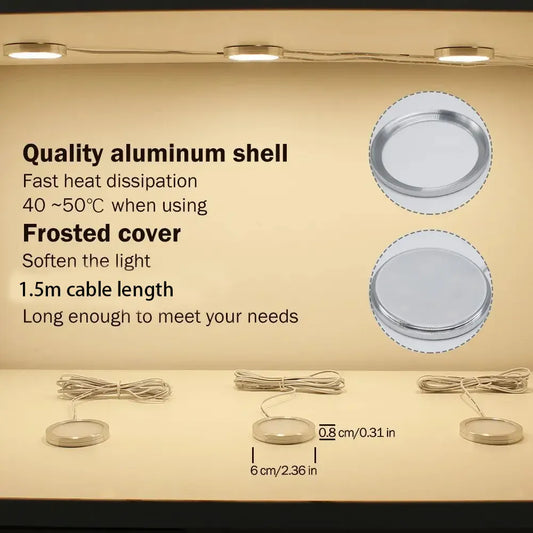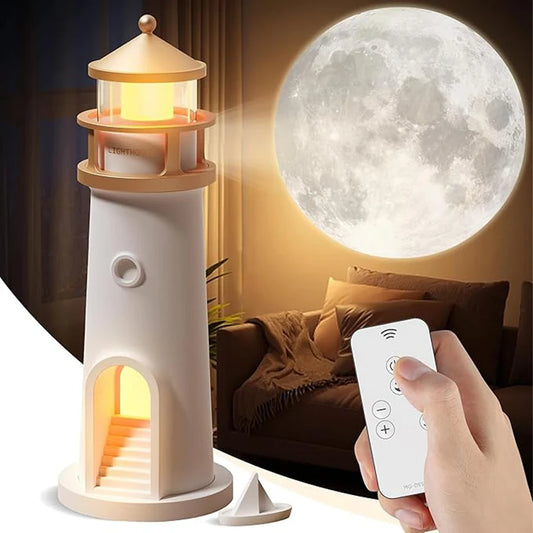
5 Pro Tips for Choosing the Best Battery Operated Motion Sensor Light
Share
Battery operated motion sensor lights are an excellent choice for improving home security, enhancing convenience, and saving energy. However, with so many options available on the market, it can be tough to know which one to choose. In this guide, we'll break down 5 professional tips for selecting the best battery-operated motion sensor light that fits your needs.
Table of Contents
- Why Choose Battery Operated Motion Sensor Lights?
- Tip 1: Assess the Area and Placement for Motion Detection
- Tip 2: Choose the Right Light Sensitivity Settings
- Tip 3: Prioritize Energy Efficiency for Longer Battery Life Life
- Tip 4: Select a Light with Adjustable Time Delay
- Tip 5: Look for Weatherproof Models for Outdoor Use
- Conclusion: Choosing the Right Battery Operated Motion Sensor Light
- FAQs About Battery Operated Motion Sensor Lights
Why Choose Battery Operated Motion Sensor Lights?

Battery operated motion sensor lights are a popular choice for homeowners who want both security and convenience without the hassle of wiring. These lights are typically easy to install, cost-effective, and can be used in areas where wired lights are impractical. Whether for indoor or outdoor use, motion sensor lights can automatically activate when they detect movement, saving energy and improving security by illuminating dark areas.
With no need for an electrical outlet, these lights are ideal for places like hallways, closets, staircases, garages, and outdoor spaces like driveways and yards. They're also beneficial for areas where you don’t want to keep lights on all the time, like closets or entryways.
Tip 1: Assess the Area and Placement for Motion Detection
The placement of your battery operated motion sensor light is key to its effectiveness. First, assess the area you want to light and determine where motion is likely to be detected. Motion sensors typically have a range of about 15 to 30 feet, so you want to make sure the light will cover the space where movement is expected.
Key Considerations for Placement:
- Height: Mount the sensor at a height of 6-8 feet for optimal detection range.
- Angle: Some motion sensors detect movement within a specific angle (usually between 90° and 180°). Be mindful of where people are most likely to walk, so the sensor can detect them effectively.
- Obstructions: Avoid placing the sensor near objects that could block its line of sight, like trees or large furniture.
Pro Tip: For outdoor use, place the light near pathways or entrances where it can detect approaching people, but make sure it’s not too close to walls that could limit its field of view.
Tip 2: Choose the Right Light Sensitivity Settings
One common issue with motion sensor lights is that they sometimes turn on unnecessarily due to environmental factors like wind, small animals, or even rain. To prevent this, choose a model with adjustable light sensitivity settings. These settings let you control how much light is needed before the sensor activates.
For example, you can set the light to only turn on when the surrounding area gets dark enough, or you can adjust it so the light stays off until a person is within a certain distance. This feature is especially important if you live in a high-traffic area where non-human movement (like tree branches or cars) might trigger the sensor.
Pro Tip: If you have outdoor motion sensor lights, make sure the light sensitivity can be adjusted to prevent false triggers from things like wind or animals.
Tip 3: Prioritize Energy Efficiency for Longer Battery Life
Since battery life is a major consideration when choosing a battery operated motion sensor light, it's crucial to pick energy-efficient models that can run longer on fewer batteries. Opt for lights that use LED bulbs, as they consume significantly less power than incandescent bulbs and have a longer lifespan.
Many battery-powered motion sensor lights come with power-saving features such as dimming or adjustable brightness. By choosing an energy-efficient light, you can extend the time between battery changes and save on overall energy costs.
Real-World Data:
- LED Bulbs: Use 75% less energy than incandescent bulbs and last up to 25 times longer.
- Average Battery Life for LED-powered Lights: Can last 6-12 months depending on usage.
- Incandescent Bulbs: Typically only last 1,000 hours and drain batteries faster.
| Light Type | Energy Consumption | Average Battery Life | Best Use Case |
|---|---|---|---|
| LED | 1-5 Watts | 6-12 months | Indoor/Outdoor |
| Incandescent | 10-30 Watts | 2-3 months | Short-term use |
Tip 4: Select a Light with Adjustable Time Delay
The time delay function allows you to adjust how long the light stays on after motion is detected. Some models stay on for 30 seconds, while others offer settings for up to 5 minutes. If you're using the light for security or in an area like a hallway, having a longer time delay can ensure that the area is well-lit.
This feature is particularly useful in areas like bathrooms or closets where you may need more time to move around. Adjustable time delay settings ensure that your light won't shut off prematurely, and you can customize it to your needs.
Pro Tip: For areas like stairways or long hallways, choose a motion sensor light with an adjustable time delay of 1-3 minutes to ensure the light stays on long enough for you to move safely.
Tip 5: Look for Weatherproof Models for Outdoor Use
When purchasing battery operated motion sensor lights for outdoor use, it’s essential to choose weatherproof models. These lights are designed to withstand rain, snow, dust, and extreme temperatures. Look for lights with an IP (Ingress Protection) rating of at least IP44, which means they are protected against water splashes and dust.
For locations that experience harsher weather conditions, consider lights rated IP65 or higher, which are fully dust-tight and resistant to jets of water.
Pro Tip: For outdoor lights, always choose models specifically designed to be weatherproof. These lights will last longer and perform more reliably in challenging environments.
Conclusion: Choosing the Right Battery Operated Motion Sensor Light
Choosing the best battery operated motion sensor light depends on your specific needs, whether for security, convenience, or energy efficiency. By considering factors like placement, light sensitivity, energy efficiency, adjustable time delays, and weatherproofing, you can select a light that meets your needs while minimizing battery usage.
Take the time to evaluate the features that matter most for your space, and you’ll enjoy the benefits of automated lighting with less hassle and fewer battery changes.
FAQs About Battery Operated Motion Sensor Lights
1. How long do batteries last in motion sensor lights?
Battery life depends on factors like the type of battery used, frequency of motion detection, and the energy efficiency of the light. Typically, LED-powered lights can last anywhere from 6-12 months with regular use.
2. Can motion sensor lights work outdoors?
Yes, but make sure you select weatherproof models designed for outdoor use, especially if you live in areas with heavy rain or snow.
3. Are there motion sensor lights that work in the dark?
Yes, many motion sensor lights have adjustable light sensitivity, allowing them to turn on only when the surrounding area is dark enough.
4. Can I adjust the motion sensor’s range?
Some motion sensor lights allow you to adjust the range of detection, usually between 15 to 30 feet, depending on the model.
5. Do I need an electrician to install battery-operated motion sensor lights?
No, most battery-powered motion sensor lights are easy to install and don’t require any wiring, making them a DIY-friendly solution.
Further Reading:




























 />
/>
 />
/>
 />
/>
 />
/>
 />
/>